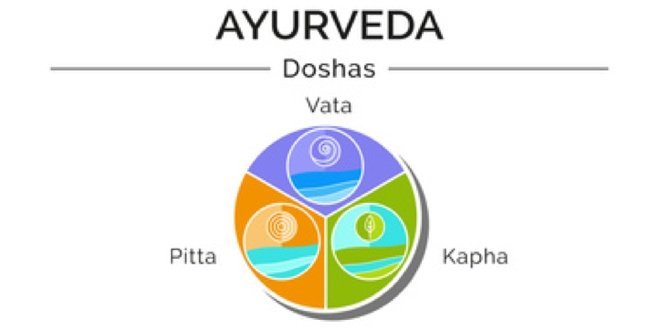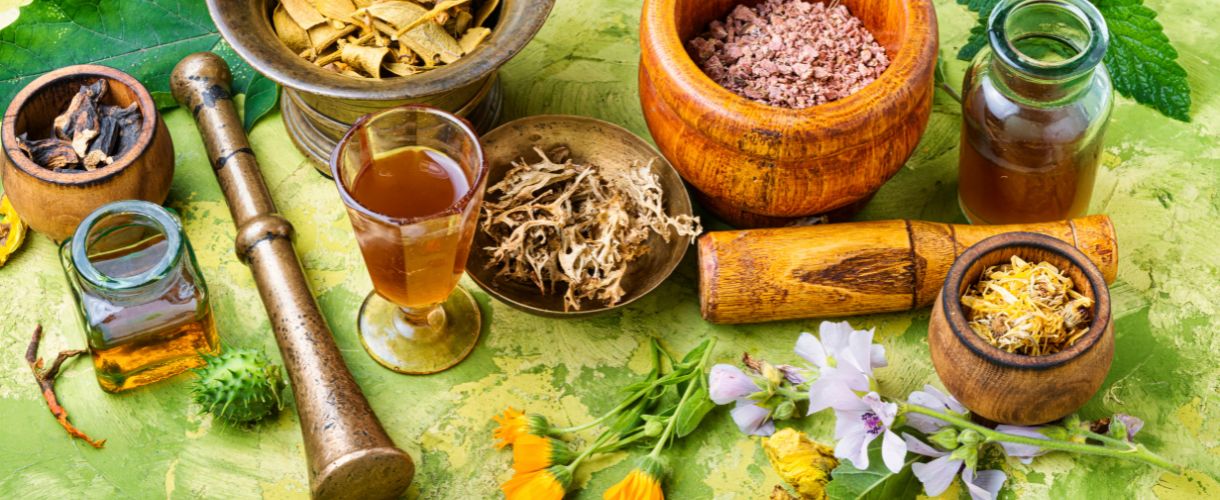Ayurvedic Facials
April 6, 2015Vata, Pitta, Kapha, the tridoshas
Biological, functional and structural components in the Ayurvedic body
The five basic elements in the universe present as the tridoshas, in the human body. Knowing the tridoshas, can help a person understand their Ayurveda body type, personality, mental and emotional characteristics and point the way to a happier, healthier life.
How the universe becomes your constitution
At the time of fertilisation, the single male sperm copulates with the single female egg forming the ovum.
Here the extent of the biological, functional and structural elements (namely, air, fire and water) prevailing in the parent’s bodies, determine the basic constitution, known as their prakruti, of the yet to be born individual.
This (prakruti) forms a constitutional thumb-print, ensuring that the basic constitution of each person remains what has been determined at the time of conception, throughout that person’s life. There are as many constitutional types as there are people.
Each person contains a unique combination of the three doshas that define their genes, temperament, characteristics and health, which is generally your benchmark for health for that unique constitution. A person cannot change their prakruti, or in other words, their doshic-body-type, which has already been determined when conception happened. It is fixed and is a product from our parents.
The Ayurvedic body type, tridosha
It is important to know that no one has only one of the three doshic types. And people with perfectly equal tridoshic body types are extremely rare. Most people fall into doshas in combination and are mixed Ayurvedic body types, or double-dosha body types examples of which can be Vata-Pitta, Pitta-Kapha, Vata-Kapha.
An increase or decrease in a person’s dominant dosha can lead to illness for them. However, the effects of dosha on your health can be manipulated. You cannot change your constitution but, you can change your diet, lifestyle and thought patterns to suit your constitution, and hence can alleviate many physical, psychological or behavioral problems.
Age
Whilst all human beings are tridoshic, all of us are born with a predominance of any one, or two of the doshas. This unique configuration of elements in an individual’s body determines the health and balance for that individual. However, irrespective of your body type, in the first 25-30 years of a person’s life, kapha dosha predominates. In the middle age, Pitta and after 60, vata will dominate.
Time of day, year, seasons
The doshas are dominant in different seasons during the year, which plays a role in increasing and decreasing doshic dominance in your body. For instance vata increases mildly in spring and more so in autumn. Pitta increases in summer and Kapha increases in winter and in the rainy season.
Place
Arid climates aggravate vata dosha; hot, tropical, sunny places can aggravate pitta dosha and moist, humidy aggravates kapha dosha.
Predominant seat in the body
Every dosha has a seat for its existence in the body,. This means that the role of the five basic elements is more predominant in certain areas of the body. For example, your stomach and digestive system is the seat of fire and water i.e where the burning, cooking or digestion of food takes place, and where you can develop gastric problems.
Herbs, diet and medicines
Herbs, diet and medicines can increase or decrease the effect of dosha in the body. The factors that are influential are taste, thermal effects, energetics, post-digestive effects and special qualities. Taste has an effect on the doshas. Vata dosha increases with bitter, astringetn and pungent tastes, and decreases by sweet, sour and salty tastes. Pitta doshas increases by pungent, sour and salty tastes and is alleviated by bitter, sweet and astringent tastes. Whereas kapha dosha is aggravated by sweet, sour and salty tastes, abd decreased by bitter, astringent and pungent tastes.
Air and space – Vata dosha
The combination of Space and Air elements in your body forms Vata dosha. Vata is the energy that governs biological movement, such as breathing, blinking of the eyelids, movement in muscles and tissues, pulsations in the heart, the movement of cytoplasm and cell membranes, movement of impulses in the nerve cells and so on.
This combination of air in the spaces of the body (Vata) also governs feelings and their movements, for example, nervousness, freshness, anxiety, pain, tremors and spasms.
The seat of Air and Space (Vata dosha) in the body are the large intestines, pelvic cavity, bones, kin, ears and thighs. If the body develops excess vata then it accumulates in this area.
People with a dominant Vata body type possess the qualities that many people associate with air, such as variability, mobility, and dryness. They are unpredictable and energetic and can be quite active in sports. They can also be impulsive, have short friendships, and may start projects without finishing them.
The Vata body type is slender with small features, with cool, dry, dark skin and hair.
A person with too much Vata could have dry skin, be nervous and suffer from insomnia.
Fire – Pitta dosha
The combination of Fire and Water elements in the body forms Pitta dosha. Pitta represents bodily heat which manifests as metabolism. Fire in the waters of the body governs digestion, absorption, assimilation, nutrition, metabolism, body temperature, skin coloration, luster of the eyes, intelligence and understanding. Pitta is also responsible for anger and jealousy.
The small intestine, stomach, sweat glands, blood, fat, eyes, and skin are the seats of pitta. Any disturbance in pitta dosha manifests itself as problem in these areas. Problems such as acne, or pimples on the skin, poor metabolic rate and so on arise from the disturbance in the combination of fire and water (Pitta) in the body.
Those with a dominant Pitta body type have the qualities of fire, such as intensity, fluidity, and lightness. Their actions are more predictable, but they can be quite passionate and aggressive. They have alert, brilliant minds with excellent memories. They are also very responsible with decisions and organisation but can be rather judgmental and critical. They are moderately sportive in physical activities.
The Pitta body type is medium-sized and muscular with sharper features. They usually have fine hair that is fair or reddish in colour.
Too much Pitta could cause excessive burning sensations, including heart burn, acne and other skin disorders, or ulcers and gastric problems..
Water and Earth – Kapha dosha
The combination of Earth and Water elements in your body forms Kapha dosha. This combination of earth and water, cements the elements in the body, providing them physical stucture, lubricates joints, provides moisture to the skin, heals wounds, fills the spaces in the body, provides biological strength, vigor and stability, and increases immunity.
These two elements, water and earth, are present in the chest, throat, head, sinuses, nose, mouth, and the liquid secretions of the body such as mucus. Any disturbance in the combination of these two elements manifests itself in these areas, for example, the cough and cold which causes the formation of mucus that manifests in the chest area.
Like water, those with a dominant Kapha body type are smooth, stable, and calm. They have relaxed temperaments and are slow to anger. They are patient, loyal, and forgiving of others. They are slower learners but have strong memories. They take time to make decisions, sometimes even procrastinating. The Kapha body type is heavy and strong, but has the tendency to be overweight. They have thick, pale skin, large features, and voluminous hair.
Kapha is responsible for specific fatty acids that reduce inflammation, heal your gut, nourish your brain and may even prevent heart disease and cancer. Western science names these “essential fats,” such as Omega-3’s, which are crucial to your health. Your body cannot make omega-3 fats, so if you don’t eat them, you don’t get them. If your body is unable to synthesise them from foods, deficiencies are extremely common and can cause a wide range of ailments including mood disorders, hormonal imbalances, chronic inflammation, and even cognitive problems.
Everyone is talking about Omega-3 fats, but no one is really eating them, and certainly not every day like they should be. The reason for this is really simple. 100 years ago, there were dozens of common foods that contained Omega-3 fats, foods such as milk, dairy products, sea vegetables and so on. Today, with modern agriculture and farming practices, Omega-3’s are extremely rare, and almost non-existent in most people’s diets. Even if you eat fish, usually those fish were farm-raised and didn’t eat the algae where they would naturally get Omega-3’s. And even if you take fish oil capsules, those fish oils are often rancid and much of the potential benefit has literally “rotted” as fish oils are not stable and shouldn’t be packaged for shelf storage.
So what should a health-loving, ayurvedic or yoga student who wants to feed their brain some good old fashioned, omega-3s fats do? Eat seeds! Both flax and chia seeds are some of the most omega-3-rich foods on the planet. They are extremely affordable, easy-to-find organically grown, and can be used in both sweet and savoury dishes.
Too much Kapha could lead to obesity, sinus congestion, or asthma.
Disease susceptibility and Doshic body types
Your prakruti makes you choose or dislike certain types of foods and activities. It can influence your mindset and also play a role in your proneness and susceptibility to certain diseases.
A Vata dominant prakruti is easily prone to Vata disorders such as arthritis, neurological disorders, various body aches and pains, bloating, tinnitus, tremors, skin dryness, constipation and so on. A vata person complains of backache, or knee pains after walking for a while, though they may look otherwise healthy.
Vata disorders are more difficult to treat in a Vata dominant prakruti, because Vata is already high in that constitutional type. Vata will suppress Pitta and Kapha Dosha and exhibit more pronounced Vata symptoms.
In a similar way, a Pitta body type person will always be prone to burning sensation, gastritis, sour belching, excess sweating, increased body temperature, red vesicles, jaundice, stomatitis, bleeding disorders, menorrhagia, skin disorders, diarrhea etc. A Pitta person will complain of heat, and perhaps with intense burning sensations upon mild exposure to sunlight.
Similarly, a Kapha body type person will be prone to anorexia, drowsiness, laziness, indigestion, obesity, oedema, phlegm adhering to the throat and so on. A Kapha person will exhibit symptoms of mucous soon after eating ice cream.
Thus, in single dosha-predominant body type, a mild causative factor of the respective dosha, can lead to a big disease. For this reason, a single doshic body type person is called as sadatura – they always have one or the other kind of illness.
In Vata-Pitta person, there are some qualities that oppose each other, such as the coldness of Vata opposing heat of Pitta. This causes a mutual nullifying effect. However, there are also some similar qualities that add up, such as lightness, nevertheless, if we consider the qualities of Vata and Pitta together, the sum effect of both together on the body is not as profound as a single predominant doshic body type person. Hence their disease susceptibility is lesser.
In a Pitta-Kapha person, the heat of Pitta opposes the coldness of Kapha, the sharpness of Pitta opposes the mildness of Kapha, the lightness of Pitta opposes the heaviness of Kapha and so on. Here again, disease susceptibility is lesser than a single predominant doshic body type. However, both Pitta and Kapha have oiliness (unctuousness) and liquidity.
In a Kapha -Vata person, the lightness of Vata opposes the heaviness of Kapha, the mobility of Vata nullifies the stability of Kapha. However, the coldness of both propel each other.
Nevertheless, overall, in double doshic body types, proneness to disease is lesser.
In a tridosha body type, where all the three doshas are (almost) in equal proportions, the opposing qualities of each dosha nullify each other and hence, proneness of disease is very less. Hence, these lucky people are called Anatura.
If the air element (vata) kindles the bodily fire (pitta) but there should be appropriate water element (kapha) to douse this fire, or else, this bodily fire will burn the tissues. Air element, (vata dosha) moves the Pitta and Kapha dosha in the body, which are otherwise immovable on their own. Thus, the balance of all of the tridoshas is responsible for all metabolic activities.
The benefits of knowing your Ayurvedic body type
The balance of tridoshas in the body, in the proportions of your unique constitution is what is needed for sturdy, robust physical and mental well being.
When you know your Ayurvedic body type
- you can make appropriate, healthy choices regarding your diet and the types of food, your lifestyle and other habits. For example, bathing in hot water is suitable for kapha, vata and combination vata-kapha body types, whereas a cold water bath is best suited for the pitta body type.
- it could help you know those illnesses and diseases that you could be most prone to, and thus take preventative measures if necessary, that incorporate a special diet and Ayurvedic products for help you balance your doshas, based on your Ayurvedic body type.
- it can help determine the severity of a disease, towards effective treatment. For instance, in a Vata body type person, Vata disorders such as osteoarthritis may present more of a challenge to treat.
However, knowing and managing your Ayurvedic body types is valid only in a healthy person. But in a disease condition, the dosha dominance is more important than the body type. Thus when an Ayurvedic practitioner suggests Ayurvedic products for you, it does not make much sense to ask, whether it suits your body type.






